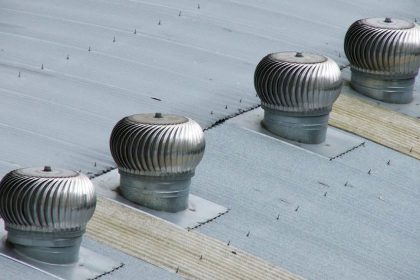 Three Reasons Why Roof Ventilation Is Important
Three Reasons Why Roof Ventilation Is Important
At first sight, ventilating the roof space might seem counter-intuitive. After all, we put a lot of effort into keeping the heat in and making our homes more energy efficient. Why would we deliberately let outside air in?
In fact, it’s precisely because modern homes tend to be so energy efficient that good roof ventilation has become so crucial. There are various reasons for this.
Condensation
The biggest damager of a poorly ventilated roof space is condensation. The warm, damp air in the loft rises to the highest point it can reach, but if there’s no colder air coming in to replace it, it can’t escape. This means it stays around for long enough for moisture to condense over all the surfaces.
This produces rot in the woodwork, including the joists and fixtures, which can result in structural damage. It can also degrade your insulation, making it work less effectively, as well as creating mould on wallpaper, plaster and paintwork throughout the house.
If you have vents to allow cooler air into the lower part of the loft, this replaces the warm air, letting it escape. The moisture it carries isn’t around long enough to affect the woodwork or any other internal surfaces.
Air Quality
The importance of air quality in workplaces has been understood for a while, but the issue is just as important in your home. Stagnant air, especially if it’s damp, is perfect for a variety of harmful bacteria to breed.
It’s even worse if condensation has led to mould developing, since mould spores in a building’s atmosphere can be extremely hazardous to health. Typical symptoms of poor air quality include tiredness, lethargy, headaches, dry or itchy skin and eye irritation. This can be avoided by ensuring that the air is circulating efficiently.
Ice Damage to Your Roof
It may seem strange that warm air could contribute to ice damaging your roof, but this can happen when it snows. The reason is that the air warms up the roof, melting the snow. However, when the run-off reaches the eaves, the warmth has gone, and it refreezes into ice.
Although snow can damage your roof, ice is far worse. It warps the roofing materials, insinuates itself into the tiny cracks and widens them, leaving access for water. Good ventilation makes the roof a more even temperature, so you’ll only have the less-damaging snow-cover to deal with.
If you’re not sure whether your roof space is adequately ventilated, why not give us a call and we can have a look.









